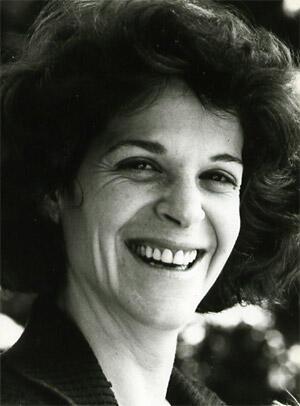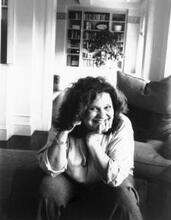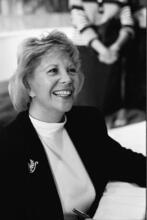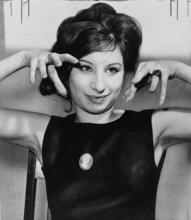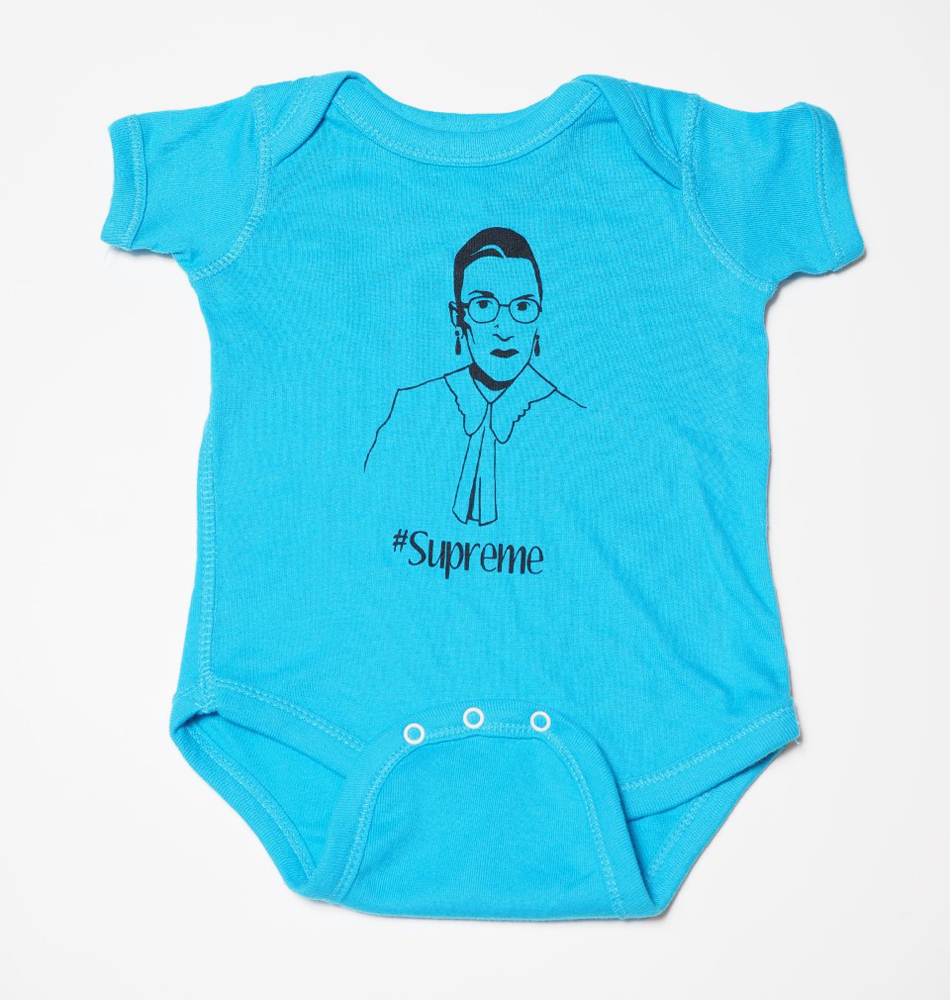Gilda Radner
Gilda Radner got her start in Toronto in 1972 before joining the Toronto Second City Comedy Troupe. In 1974, she joined the National Lampoon Radio Hour with many of the same players who would go on to Saturday Night Live. When SNL was created in 1975, Radner was the first person cast. She parodied celebrities like Barbara Walters but was best known for her original characters, such as the bumbling commentator Emily Litella and the brash personal advice guru Rosanne Rosannadanna. She won an Emmy for her work on SNL in 1978. In 1980, she left the show to begin a film career, falling in love at first sight with Gene Wilder on the set of Hanky Panky in 1982 and marrying him in 1984. She made several more films before her death from ovarian cancer in 1989. Her autobiography, It’s Always Something, was published that year.
Known to television audiences as bumbling Emily Litella, scatterbrained Roseanne Roseannadanna, and nerdy Lisa Loopner, comedian Gilda Radner shot to stardom on NBC’s Saturday Night Live (SNL). Hailed by critics as the next Lucille Ball, Radner’s success in television in the 1970s led to a brief film career, tragically cut short by cancer at age forty-two.
Early Life and Comedic Influences
Gilda Radner was born June 28, 1946, into the prosperous Detroit Jewish family of Herman and Henrietta (Dworkin) Radner and older brother Michael. Herman’s father, George Ratkowsky, had emigrated from Lithuania to New York City, and later to Detroit, where he established a successful Term used for ritually untainted food according to the laws of Kashrut (Jewish dietary laws).kosher meat business. Herman, despite only a fifth-grade education, made the family fortune from an Ontario brewery he purchased in the 1920s. Radner’s mother, Henrietta, was an aspiring ballet dancer who worked as a legal secretary until she married Herman in October 1937.
Radner remembers her childhood as one of the most difficult periods of her life. Because her mother could not tolerate the Detroit winters, the family spent four months each year in Florida, disrupting the school year, and preventing Radner from making close friends. Radner became attached instead to her governess, “Dibby” (Elizabeth Clementine Gillies), the model for her SNL character Emily Litella. When schoolchildren teased Radner for being overweight, “Dibby” provided Radner with her first lesson in comedy, telling her to “say you’re fat before they can. Just make a joke about it and laugh.” Her relationship with her mother was distant and somewhat competitive, but Radner felt very close to her father, who died of brain cancer when she was fourteen years old. Indulging his own show-business fantasies, Herman encouraged her to perform, gave her dancing lessons, and often took her to Broadway road shows in downtown Detroit. While not religiously observant in her adult life, Radner had a clearly Jewish upbringing. Her brother had a Lit. "son of the commandment." A boy who has reached legal-religious maturity and is now obligated to fulfill the commandmentsbar mitzvah, she attended Sunday and Hebrew school, and sat Lit. "seven." The seven-day mourning period held following the death of an immediate family member: spouse, parent, child or sibling.shivah for her father when he died. For comic material, she often drew on the Jewish community in which she grew up—in skits about the gum-cracking Jewish coed Rhonda Weiss or in her famous “fake” commercial for skin-tight “Jewess jeans.”
Radner attended the University of Michigan, majoring in drama, but never graduated. She moved with a boyfriend to Toronto and landed a part in the musical Godspell. She later joined the Toronto company of Second City Comedy, an improvisational comedy troupe, where she worked with Dan Aykroyd, John Belushi, and Bill Murray.
Saturday Night Live
Radner moved to New York in 1973, joining many of her Second City friends in “The National Lampoon Show,” an Off-Broadway cabaret. In 1975, producer Lorne Michaels chose Radner (whom he had seen perform in Toronto) and other members of the Second City company for his new late-night comedy/variety show. Gilda Radner premiered with the Not Ready for Prime Time Players on Saturday Night Live in October 1975 and continued to perform with the troupe until 1980, garnering a 1978 Emmy Award for her work on the show.
While life as a television star was glamorous and fulfilling, Radner suffered from the pitfalls that can accompany fame. Under constant public scrutiny, her lifelong insecurity about her appearance resurfaced, manifesting itself in bouts of bulimia. And although Radner clung to the SNL crowd as a surrogate “family,” she often voiced her desire for marriage and a family of her own. Radner took her SNL act to Broadway in 1979 (Gilda Radner—Live from New York), where she received mixed reviews from critics, but met her first husband, G.E. Smith, the bandleader for the show, whom she married in a civil ceremony in 1980.
Family and Film
Radner appeared in Buck Henry’s film First Family (1980), and then in Hanky Panky (1982), during which she met Gene Wilder. She described the meeting as love at first sight. She soon divorced Smith (1982), and made a second movie with Wilder, The Woman in Red (1984). Wilder and Radner were married in the south of France in September 1984. They made one more movie together, Haunted Honeymoon (1986), before Radner was diagnosed with ovarian cancer. Between chemotherapy treatments, Radner wrote her autobiography, It’s Always Something, in which she detailed her struggle with cancer and the aid she received from the Wellness Community.
Later Life and Influence
Gilda Radner died in Los Angeles on May 20, 1989. She employed her Jewish identity as an essential element in her comedy, and her affectionate and incisive characterizations represented an important breakthrough in the visibility of Jewish women on television.
FILMOGRAPHY
The Last Detail (1973)
All You Need Is Cash (1978)
Mr. Mike’s Mondo Video (1979)
First Family (1980)
Gilda Live [film and record] (1980)
Hanky Panky (1982)
The Woman in Red (1984).
Movers and Shakers (1985)
Haunted Honeymoon (1986)
Current Biography (February 1980): 29–32.
Hevesi, Dennis. “Gilda Radner, 42, Comic Original of ‘Saturday Night Live’ Zaniness.” NYTimes, May 21, 1989, 46.
Kaplan, Robert. “Gilda, I Can’t Forget You.” NYTimes, June 2, 1989, A31.
Radner, Gilda. It’s Always Something. New York: Simon & Schuster, 1989.
Saltman, David. Gilda: An Intimate Portrait. Chicago: Contemporary Books, 1992.
Stone, Elizabeth. “Gilda Radner: Goodbye; Roseanne, Hello, Broadway.” NYTimes Magazine, November 9, 1980, sec. 6, p. 42.
Talbot, Rachel, dir. Making Trouble: Three Generations of Funny Jewish Women. 2006; Jewish Women’s Archive.
Young, Tracy. “America’s Last Sweetheart.” Mirabella (September 1989): 122.

